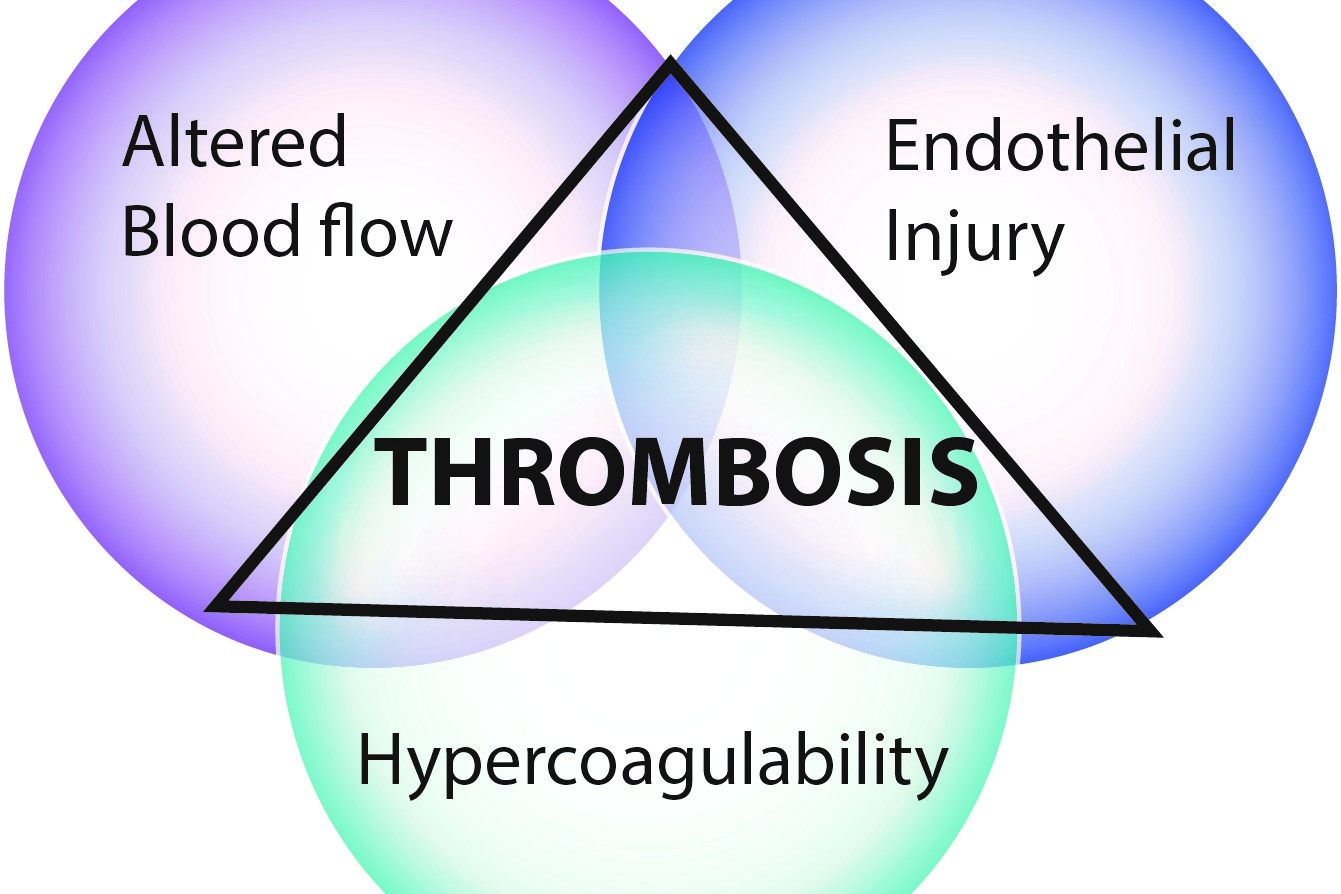
Virchow's triad: the three risk factors for thrombosis
Virchow’s triad (pronounced: ‘virciu’) in medicine describes the three broad categories of risk factors that are believed to contribute synergistically to thrombosis
The three factors of Virchow’s triad are:
- Blood hypercoagulability.
- Haemodynamic changes (such as slowing of flow, stasis, turbulence).
- Injury/dysfunction of the endothelium of the blood vessel wall.
The triad is named after the eminent German physician Rudolf Virchow (1821-1902)
However, the elements that make up Virchow’s triad were neither proposed by Virchow nor did he ever suggest a triad to describe the pathogenesis of venous thrombosis.
In fact, it was only decades after his death that a consensus was reached that led to the formulation of the theory that thrombosis is the result of alterations in blood flow, vascular endothelial damage or alterations in blood constitution.
However, the modern understanding of the factors leading to embolism is similar to the description given by Virchow.
Despite its origins, after 100 years, Virchow’s triad still remains a very useful concept for physicians and pathologists in understanding the factors underlying thrombosis.
Virchow’s triad consists of three elements:
- Phenomena of blood flow interruption: Blood stasis. The first category, alterations in normal blood flow, refers to various situations. These include venous stasis, mitral stenosis, prolonged immobility (such as a long period in bed or in a car) and varicose veins. The equivalence of Virchow’s version and the modern version has been disputed.
- Phenomena associated with irritation of the vessel and its surroundings: Endothelial damage or damage to the vessel wall. The second category, injury and/or trauma to the endothelium, includes vessel rupture and damage resulting from shear stress or hypertension. This category consists of surface phenomena and contact with procoagulant surfaces, such as bacteria, fragments of foreign materials, biomaterial implants or medical devices, activated platelet membranes and monocyte membranes during chronic inflammation
- Blood clotting phenomenon: Hypercoagulability. The last category, alterations in the constitution of the blood, has numerous possible risk factors such as hyperviscosity, antithrombin III deficiency, protein C or S deficiency, Leiden factor V, nephrotic syndrome, changes following severe trauma or burns, metastases from cancer, late pregnancy and childbirth, race, advanced age, cigarette smoking, and hormonal contraceptives and obesity. All these risk factors can cause hypercoagulability (blood clotting too easily).
Read Also:
Emergency Live Even More…Live: Download The New Free App Of Your Newspaper For IOS And Android
Venous Thrombosis: From Symptoms To New Drugs
Deep Vein Thrombosis Of The Upper Limbs: How To Deal With A Patient With Paget-Schroetter Syndrome
Venous Thrombosis: What It Is, How To Treat It And How To Prevent It
Non-Traumatic Intramural Hematomas In Patients On Anticoagulant Therapy
The New Oral Anticoagulants: Benefits, Dosages And Contraindications
Non-Traumatic Intramural Hematomas In Patients On Anticoagulant Therapy
Thrombus: Causes, Classification, Venous, Arterial And Systemic Thrombosis
Anticoagulant Drugs: List And Side Effects


